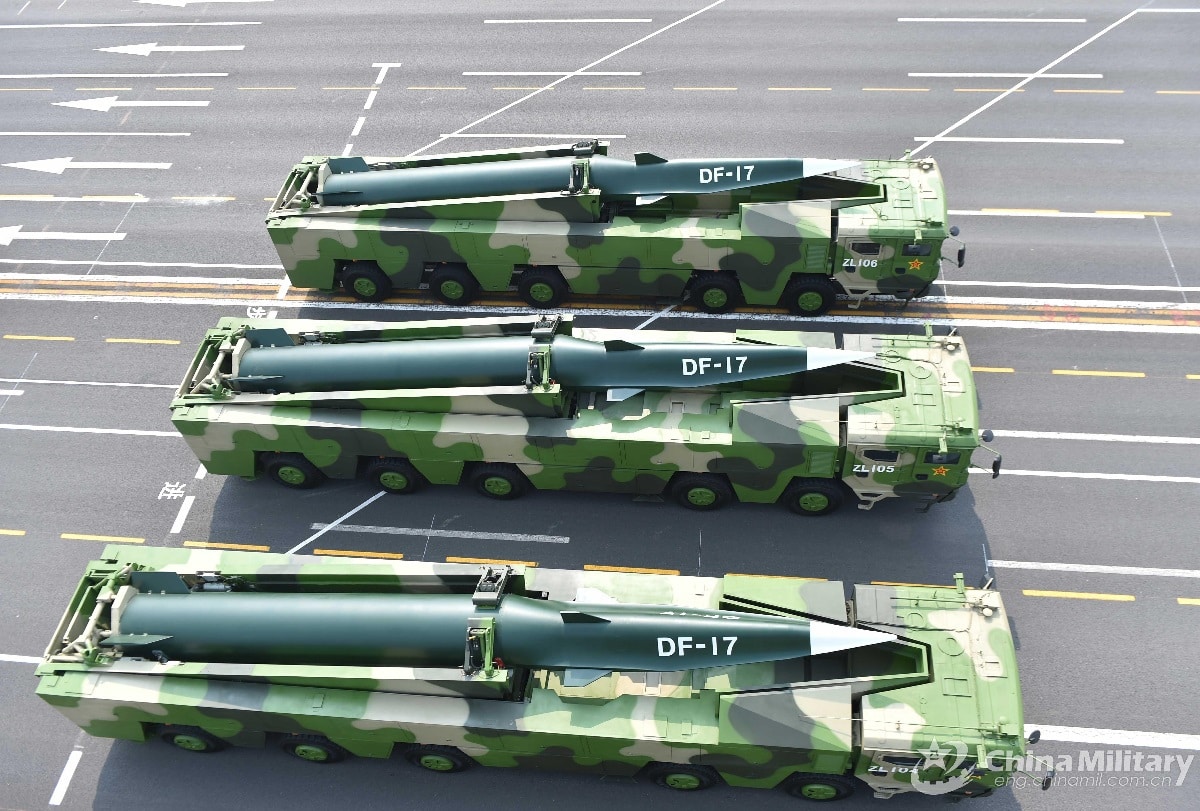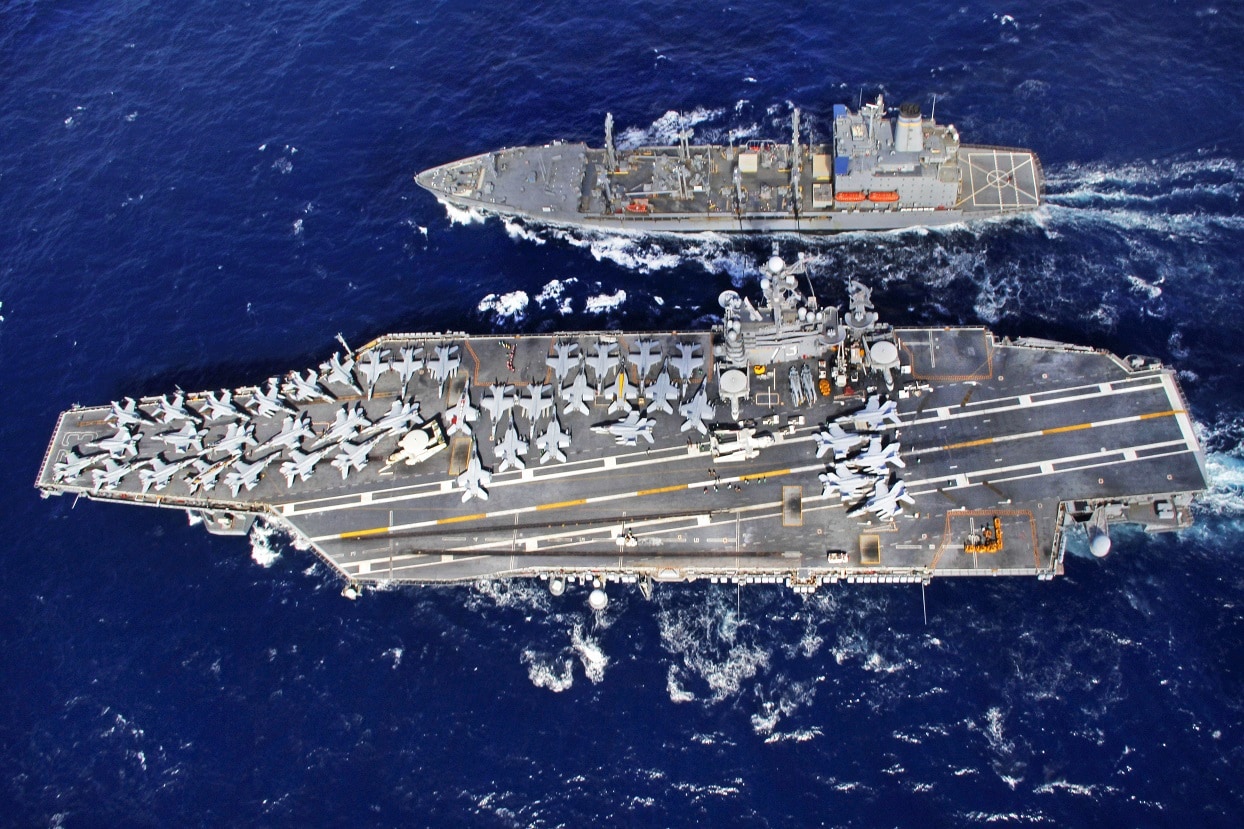Summary and Key Points: China’s expanding arsenal of medium and intermediate-range ballistic missiles (MRBMs/IRBMs), like the Dongfeng series, poses a significant threat to US and allied forces in the Indo-Pacific.
-These missiles endanger critical assets like runways and naval fleets, potentially neutralizing US force projection capabilities, especially concerning Taiwan and the South China Sea.

SiAW missile. Image Credit: Creative Commons.
-While countermeasures like enhanced missile defense, drone swarms, and rapid repair training are crucial, recent purges revealed corruption hampering PLA Rocket Force readiness.
-Despite this, China continues rapid expansion, necessitating increased US investment, strategic adaptation, and transparency about the risks to maintain deterrence and regional stability.
China’s Massive Missile Force Takes Aim at US Power in the Pacific
China currently has one of the world’s top military capabilities, with force projection power to upend the quiet storm in the Indo-Pacific. China’s military, the People’s Liberation Army, and its navy, the PLAN, have a wide variety of assets that threaten dozens of countries in the region, including medium—and intermediate-range ballistic missiles (IRBMS and MRBMs).
China’s medium—and intermediate-range ballistic missiles are a critical asset in the PLA’s arsenal and a countermeasure against growing U.S.-Backed regional alliances and partnerships. They could be used in several brewing conflicts in the Taiwan Strait, the Luzon Strait, and the South China Sea. Indo-Pacific countries and the United States should focus on figuring out ways to defend and counteract Beijing’s growing rocket force.
China’s Growing Ballistic Missile Fleet and Capabilities
The People’s Liberation Army Rocket Force (PLARF) currently utilizes an estimated 1,300 medium-range ballistic missiles called Dongfeng (DF). The People’s Republic created the DF through the China Aerospace Science and Industry Corporation, which uses different variations of the Dongfeng depending on mission needs.
In the PLA’s intermediate-range ballistic missile inventory, Beijing uses four variations of Dongfeng: the DF-3, DF-4, DF-25, and DF-26. The DF-3 was China’s first modern missile, entering service in 1971, and enabled further testing and research to create the other variants.
The IRBMs have variations that range from 1,700 kilometers to 5,500 kilometers, though the later DF IRBM variants are more effective in achieving the target. The DF-26 is different from the others as the missiles are capable of nuclear payload.
China’s MRBMs include the DF-2, DF-17, and DF-21. The DF-2, the first MRBM variant, was nuclear-capable but replaced with the upgraded DF-21 in the late 1970s. DF-21 missiles include variants A, B, C, and D, with the latter focusing on anti-ship operations. The DF-17, the most modern MRBM in service since 2019, can be used with mobility and has both conventional and nuclear warheads capable of a distance of 2,500 kilometers.
How the Missiles Pose a Threat in the Indo-Pacific
A hallmark of American deterrence doctrine and force projection is the ability to respond to any crisis on Earth through aerial and naval superiority, which will be threatened under China’s missile threat. The extent of Beijing’s IRBMS and MRBMs immediately threatens U.S. bases in the vicinity of the Taiwan Strait and South China Sea, where the PLAN is militarizing, which makes recalibrating contingencies even more urgent.
United States Indo-Pacific Command (USINDOPACOM) currently has critical assets such as runways, naval fleets, and fixed-wing aircraft such as the F-35 stationed near the PLA’s missiles, which could be targeted in the event the latter decides to conduct armed operations against Taiwan, Vietnam, Japan, or the Philippines.

DF-17. Image Credit: Creative Commons.
The PLA’s strategy of denying American superiority could first include destroying critical assets such as runways in Japan and other theaters before switching to hangars. This would leave America’s navy—particularly aircraft carriers in the Pacific—vulnerable to attack, which could give Beijing key freedom of movement with aerial supremacy, especially if the PLA plans to naval blockade Taiwan that only the U.S. Air Force could break.
China’s growing missile capabilities effectively hamper freedom of movement for various countries in the Indo-Pacific, bringing discussions in the U.S. Congress for the military to analyze methods to reinforce hardened hangers and aircraft shelters. Still, a significant conundrum remains—runways are always vulnerable to the PLA’s missiles.
Another major PLA aim is to damage aircraft runways with aerial refueling capabilities. By removing those specific logistical capabilities, the PLA could hamper refueling for America’s fifth-generation fighters, such as the F-35s, which could turn the tide in a war if the U.S. and China were intertwined in one.
Can we Counteract the Missile Threat?
To counteract China’s vast medium and intermediate-range missiles, which pose the closest threats, the United States will need to spend more on missile defense and out-strategize the PLA. With Beijing adapting to Washington’s struggles, the U.S. and its regional allies and partners must also adapt to the People’s Republic.
Probing ways to counteract China’s growing missile capabilities, the Stimson Center published a December 2024 strategy stating that America and its regional allies should hinder China’s surface-to-surface capabilities by producing more air defense and drone swarms. Furthermore, enhanced laser weapons development can help supplement air defense systems.
Sustained training should be prioritized for all maintenance crews and pilots to simulate events of PLA missiles striking runways and hangers so U.S. troops and other allied Indo-Pacific militaries can have contingencies on quick rebuilding, mobilizing assets in a prompt matter and rebuilding efforts in the event of war. Nevertheless, Beijing’s vaunted missiles are not entirely the same as the PLA’s rocket arsenal, which suffers from a key weakness—backdoor corruption.

Chinese DF-17 missiles. Image: Chinese internet.
In late December 2023, Beijing purged China’s defense minister and other senior ranking officers and officials due to corruption in the PLA’s rocket force capabilities. According to a January 2024 Bloomberg report with sources, the reason behind the purges was an ample number of missiles filled with water instead of fuel, which hampers the functionality and impact of the DFs.
Nevertheless, the PLARF is adaptable, and Chinese Premier Xi Jinping is making his motives more transparent and efficient. Heather Williams, director of nuclear issues for the Center for Strategic International Studies, noted that the PLARF rapidly expanded its missile capabilities in 2023 despite corruption and could use military means more than its economic and diplomatic soft power to expand its influence and interests.
Current Assessments
The People’s Liberation Army continues to expand by building a military capable of force projection in the Indo-Pacific and future endeavors across various theaters, such as Latin America, the Middle East, and Africa. By utilizing its medium and intermediate-range rocket force, the PLARF could eliminate key hangers, runways, and bases in Taiwan, Japan, and South Korea and threaten the freedom of movement of the U.S. Seventh Fleet.
The United States and other countries in the Indo-Pacific need to invest in further air defense capabilities, drone swarms, and defensive measures to protect key assets from missile strikes. Outspending, outthinking, and outmaneuvering the PLA should be a priority for the Pentagon in the future as Beijing analyzes weak spots in American indecisiveness.
A policy recommendation should be strategic ambiguity and maintaining the deterrence threshold over China, emphasizing that the threat of attacking American bases could be reciprocated against bases in the mainland and outlying islands. Nevertheless, the U.S. government should be transparent about the PLARF’s rocket force to constituents and military personnel by stating not every missile will be shot down in the event of war with China, and there will be casualties.
About the Author: Julian McBride
Julian McBride, a 19FortyFive Contributing Editor, is a forensic anthropologist and independent journalist born in New York. He is the founder and director of the Reflections of War Initiative (ROW), an anthropological NGO that aims to tell the stories of the victims of war through art therapy. As a former Marine, he uses this technique not only to help heal PTSD but also to share people’s stories through art, which conveys “the message of the brutality of war better than most news organizations.”

